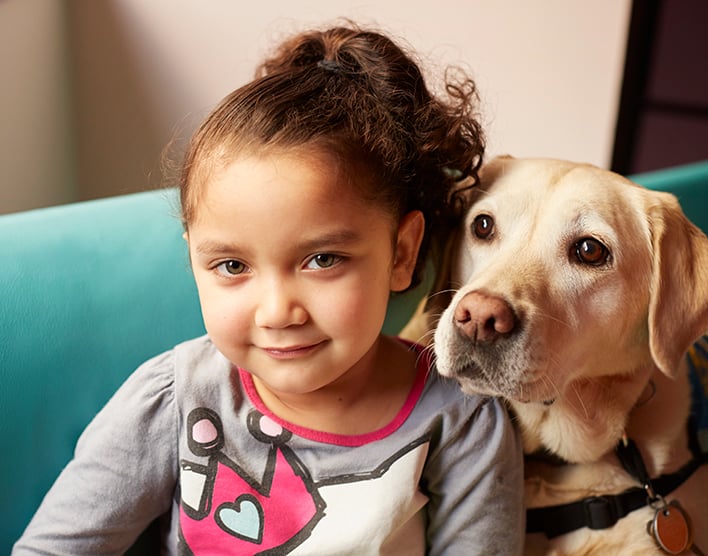There’s nothing quite as wonderful and amazing as newborn skin. It protects baby from bacteria and germs, and helps her body hold a normal temperature. Use these research-based tips from the nurse experts of the Association of Women’s Health, Obstetric & Neonatal Nurses (AWHONN) to help keep your baby’s skin healthy, beautiful and soft.
Baths are a wonderful way to both clean and bond with your baby as he relaxes in warm water. Bathe your baby about 3 times a week—or every other day—for the first month of life if all is healthy and well with his skin.
Most babies are born with a white creamy coating on their skin called vernix. It protects baby’s skin, keeping it soft. It’s sticky and may not come off during bathing. There’s no need to rub it off— let it wear off on its own.
(Unless your healthcare provider has told you otherwise, it’s OK to bathe baby with his cord stump still in place.)
Cradle Cap Care
You may notice thick, crusty and yellowish scales or patches on baby’s head. This is cradle cap (seborrheic dermatitis), which is a buildup of body oils and old skin on baby’s scalp or face. While cradle cap usually appears on baby’s head, it can spread to other parts of baby’s body, although this is less common. It can appear anywhere baby has oil-producing sebaceous glands, such as under his arms. It doesn’t hurt or itch and usually clears up within the first few months of life.
Eliminate cradle cap over time with these steps:
- Wash baby’s scalp daily with a mild baby shampoo.
- Gently loosen the scales with a soft baby brush or infant comb while the shampoo is on baby’s head. Avoid putting pressure on the soft spot—known as the fontanel—in his head.
- For stubborn cradle cap, apply an infant-safe lotion or oil directly to the scales for at least an hour prior to washing to help gently loosen the scales.
- If cradle cap persists talk to your baby’s healthcare provider.
Bath-Time Basics for Baby
Preparation is Essential for Easy Bathing
Arrange his tub, washcloth and towels or blankets, and products all within reach before you begin. Bathe baby in a warm room, and eliminate drafts by keeping the door closed when possible. Keep baths short—about 5-10 minutes at first—so that baby doesn’t get cold. Unless your healthcare provider has told you otherwise, it’s OK to bathe baby with his cord stump still in place.
- Always start by washing your hands.
- Only use a mild, gentle cleanser designed for babies.
- Always use warm– not hot–water, between 100–104 degrees F. Check the water temperature with a bath thermometer or test it on the inside of your wrist or elbow.
- To shampoo, first wet baby’s hair, then apply an infant-safe shampoo gently with your hand. Lightly massage baby’s scalp with your hand or a soft baby brush, and rinse with water moving down the back and sides of baby’s head. Do not put pressure on the soft spot–known as the fontanel–in his head.
- Always support baby’s head and neck during bathing.
- Gently rinse baby’s body with your hands or a soft cloth, moving from head to feet, ensuring no soap is left behind.
- Begin with a clean cloth and wash baby’s face first, body second and diaper area last. Always wipe away from the eyes and mouth into the creases as you go behind his ears, around his neck, into his underarms, between his fingers and toes, and in his diaper area.
- Move baby from his bath into a towel or blanket and pat his skin dry rather than rubbing it. Once dry, dress baby to keep him warm.
Never leave your baby alone during a sponge bath or while in the bath tub, even if a bath seat or sling is used.
Tub Bath Tips
- Place bathtub in a safe place and on a strong surface.
- Swirl water so there are no “hot spots.”
- While holding baby, lower him into the water feet first. Allow baby to rest so that the water covers just up to his shoulders. If your baby’s tub provides different instructions, follow the instructions with your baby’s bathtub.
- Your baby may fuss or cry at first. For comfort, try swaddling baby first before placing him in the water.
Swaddled Bathing
Swaddled bathing is very relaxing and calming for the baby and increases the parent’s confidence in handling the baby. Swaddled bathing is a calming, comforting, neurodevelopmentally-supportive method of bathing a medically fragile infant. Supported by the Infant Development Specialist or bedside nurse, the parent bathes the baby who is comfortably swaddled in a cloth that supports a flexed, tucked position during the bathing.
The baby is gradually unwrapped from the supportive swaddle cloth during the bathing, relaxing into the warm bath and experiencing the comforts similar to being in the uterus. This bathing process has neurodevelopmental benefits for the smallest of premature infants to most the medically fragile babies.
Sponge Bath Tips
- Undress baby and wrap him in a towel or receiving blanket.
- Then, place your wrapped baby on a second clean blanket, towel, or pad.
- Wet a soft washcloth in a warm bowl of water.
- Wring out excess water from washcloth so water doesn’t get into baby’s eyes when washing his face.
- Unwrap each area as you wash, pat dry, and re-wrap to keep baby as warm as possible.































